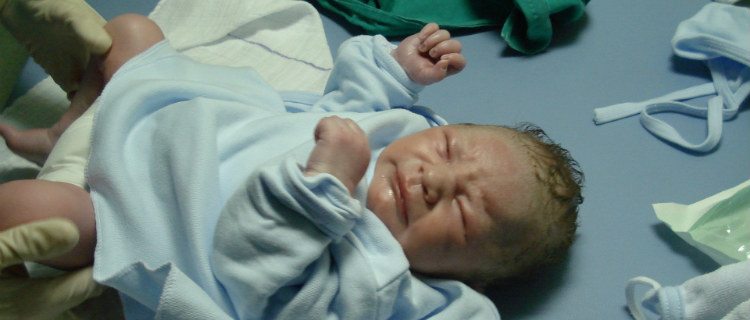Cerebral palsy is a complex disorder caused by brain damage suffered before, during or shortly after a child’s delivery.
- Maternal infections
- Oxygen deprivation
- Obstetric negligence
Do you think a doctor or medical team’s negligence left your child with severe brain damage? Our experienced birth injury attorneys can help. Contact us today for a free consultation.
Our medical malpractice attorneys stand with families every day to help them secure valuable financial compensation.
"Great Lawyer." Laurence helped my family work through a very sensitive case.
Cerebral palsy is a permanent neuromuscular disorder caused by brain injury or malformation, which can develop either before, during or after a child’s delivery. While every case of cerebral palsy involves some form of brain damage, the brain of a child can suffer injuries in numerous ways.
What Causes Cerebral Palsy?
In reality, cerebral palsy refers to a family of related conditions, not a single disorder that can be explained easily. Every cerebral palsy diagnosis shares certain common characteristics. The condition impacts the way a person moves and develops physically, but it does so in unique ways for each patient.

In a broad sense, researchers define three primary forms of cerebral palsy: spastic, athetoid and ataxic. Your own child’s diagnosis depends mainly on his or her symptoms, which depend themselves on the type of brain damage suffered during your child’s early life.
The Causes Of Infant Brain Damage
In principle, anything that causes infant brain damage can lead to cerebral palsy, since CP is simply a form of brain damage that affects specific brain structures. Needless to say, infant brain damage is extremely complex. It can be caused by any number of factors, or it can be multifactorial, caused by multiple factors working together.
- Seizures, either before or shortly after birth
- Poorly-managed or untreated cases of jaundice
- Cerebral hemorrhage – bleeding in the child’s brain
In some cases, genetic factors may also play a role, though the genetic underpinnings of cerebral palsy, if they exist, are as yet poorly understood.
Is Cerebral Palsy Hereditary?
Cerebral palsy isn’t a hereditary disorder; it’s not passed, like eye color, from parents to their children. But genetic mutations do appear to predispose some children to develop cerebral palsy, which is why researchers have observed that cerebral palsy can run in families.
These cases of cerebral palsy begin long before a child is born. During the earliest periods of fetal formation, genetic mutations can impair the brain’s development, combining in complex ways to leave significant deficits in the brain structures that control the nervous system and muscle function.
Risk Factors For Cerebral Palsy
Cerebral palsy can also arise from genetic causes in a more distant sense, through the mediation of risk factors. Over the decades, researchers have identified numerous pregnancy conditions and labor complications that increase the risk for cerebral palsy, making it more likely than normal that a child will ultimately be born with the disorder. And many of these risk factors are impacted by genetics.
- Maternal thyroid disorders
- Maternal seizure disorders
- Rh disease – a condition in which a mother’s blood is incompatible with the blood of her child
- Multiple pregnancies (twins, triplets or more)
- Premature birth
- Low birthweight
And, while not genetic in nature, a number of maternal infections, when passed from a mother to her child, can also lead to brain damage.
Oxygen Deprivation & HIE
Some cases of cerebral palsy are ultimately attributed to complications of labor and delivery, according to the US Centers for Disease Control and Prevention. The leading cause of brain damage, when it occurs before or during a child’s birth, is likely oxygen deprivation. Oxygen keeps our cells alive and, without oxygen, cells can die off quickly. That’s true for every organ in the human body, including the brain. So how does oxygen deprivation occur? There are two primary mechanisms:
- insufficient amounts of oxygen in the blood
- insufficient amounts of blood reaching the organs
In many cases, these two processes work together, making the situation worse. Children who suffer brain damage due to a compromised oxygen supply, along with low blood pressure, are said to have suffered hypoxic-ischemic encephalopathy, or HIE. HIE is a leading cause of premature death among infants worldwide, as well as a primary contributor to many cases of cerebral palsy.
How Does HIE Happen?
Infants can experience oxygen deprivation at any point during pregnancy, labor or delivery.
Since unborn children rely entirely on their mother’s body for sustenance during growth, anything that compromises the mother’s oxygen or blood supply can come to impact her child. As a result, women with blood pressure disorders may be more likely to deliver children with cerebral palsy.
In other cases, a child’s oxygen supply can be disrupted during labor. Remember that unborn children receive their oxygen through the umbilical cord, so any labor complication that jeopardizes the umbilical cord can ultimately result in brain damage.
Inadequate Medical Care
Then, we have a range of cerebral palsy causes that could relate to medical negligence, a violation of the standard of care that doctors owe to their patients.
Untreated Jaundice
We’ve already mentioned one of these in passing. Jaundice is a common medical condition in newborn babies, linked to an increase in the amount of bilirubin, a pigment found in bile.
Untreated cases of jaundice can lead to disaster. Bilirubin is highly-toxic, especially to neurons. When bilirubin is allowed to build up in the brain, it can lead to a form of severe brain damage known as kernicterus.
At the same time, jaundice is a thoroughly-treatable medical disorder that should be taken carefully from the start. Cases of jaundice that progress to kernicterus were likely mismanaged by medical professionals.
Blunt-Force Brain Injuries
Traumatic brain injuries, while rare, are another potential cause of cerebral palsy. In many difficult deliveries, obstetricians utilize medical instruments, like forceps and vacuum extractors, to pull a child through the birth canal.
Needless to say, doctors have to use exquisite care to avoid harming a baby when using these instruments. One wrong move could permanently harm the child’s head, leading to brain bleeding, puncture-style brain injuries and cerebral palsy.
Perinatal Asphyxiation
In a similar vein, obstetric interventions can interrupt a child’s oxygen supply directly. When obstetricians attempt to intervene manually, repositioning a child’s body in the birth canal with their hands, appropriate care must be taken to avoid pinching the umbilical cord.



